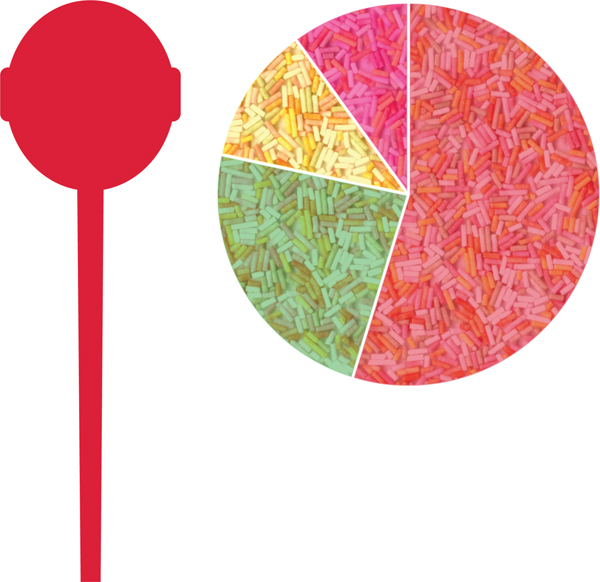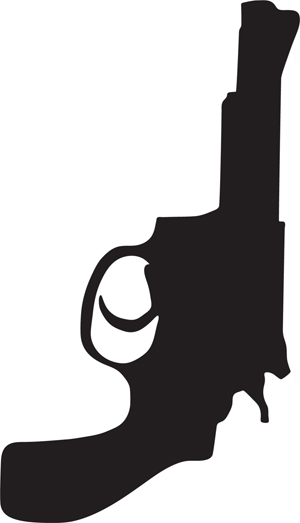
Women’s Design + Research Unit: Siân Cook and Teal Triggs

Prompted by a visit to the Stanley Kubrick Archive, housed at the University of the Arts London, this visual essay initially set out to create a taxonomy of designed objects (e.g., sunglasses, Coke bottles, drinking straws, and a collection of guns) found in selected interpretations of Vladimir Nabokov’s novel Lolita (1955). As researchers, we were also interested in the serendipity of archives generally, and the way in which the discovery of one set of materials often leads to finding another. In this archive, links were found between Nabokov’s use of designed objects and how such objects were represented in Kubrick’s film (MGM, 1962) and in that film’s publicity shots, taken by the noted American photographer Bert Stern. In addition, our intent for this piece was to move outside of an already well-trod territory of analysis found in literary and film criticism (Stam, 1992; Vickers, 2008; Jenkins, 2005) and present an alternative reading of this integrated relationship through the visual. Our focus was on the properties of color and form and their respective meanings as narrative devices in the three versions: book, film, and film-publicity photographs.
Nabokov, Kubrick, and Stern were already important figures in the arts in the 1950s and early ’60s. Nabokov’s novel was published in 1955, and the film was released in 1962, the same year that Stern’s highly stylized publicity photographs appeared. The relationship among the three is important to note: Kubrick developed Nabokov’s screenplay into a film and knew Stern from their time together as staff on Look magazine.
Our research process began with the formation of a visual taxonomy in order to analyze the relationship between the different authorial approaches and trace the interwoven narratives. In order to achieve this, the logical starting point was Kubrick’s black-and-white film and his original continuity script: a stack of individual 8.5-by-11-inch sheets of textured pink paper with hand-scrawled annotations and drawings inserted methodically into the margins (and housed in a gray boxboard binder). The Stern material consisted of boxes of dozens of 35 mm Kodachrome slides.
What is intriguing is how Nabokov’s use of color is translated into the work of Kubrick and Stern, each of whom adopted very different approaches. Kubrick and Stern build the emotional tensions of the film’s characters through lighting, pace, atmosphere, and expressions (Paquet-Deyris 2010: 2) and the use of designed elements. Kubrick’s film is shot completely in black-and-white—yet, in the continuity script, there are clear instructions for objects to be specific colors. His fastidiousness has often been speculated to be an expression of an obsessive-compulsive disorder, and the extreme lengths he went to collect source material was the subject of Jon Ronson’s 2008 documentaty, Stanley Kubrick’s Boxes. His preoccupation with color and meaning, for example, can be seen in his instructions for placing tapered red dinner candles on the dining-room table, which is the setting for a conversation between Humbert and Charlotte (Lolita’s mother) about Lolita’s development and “interest in those fascinating creatures known as the opposite sex” (Kubrick, 1962: 30.04 min).
Stern’s slides, however, are rich and sultry, using lighting to intensify the hues of red, yellow, and pink. Some of the images of the teenage actress Sue Lyon, who played Lolita, were published in Look in July 17, 1962, and were determinedly not salacious, in tune with the general-interest orientation of the magazine. Some of the outtakes, however, were much more racy, as the archive demonstrated.
Nabokov sets his story in America of the 1940s and early ’50s. The main character, Humbert Humbert (born in Paris and an immigrant to America), is a literary scholar who ends up in the fictitious New England town of Ramsdale. America at the time, is in the grip of a type of social conformity (Muller, 1982: 265). The rise of suburbs brings with it bored housewives and gray-suited commuters. Such characteristics are enhanced by Kubrick’s choice of black-and-white film. Lolita, in contrast to her setting, is a “naughty but nice” girl, a teen with sex appeal—a quality that persuades the initially reticent Humbert to take up Charlotte’s offer to become a lodger in their family home. In Kubrick’s film, Humbert first encounters Lolita wearing a floral bikini, large oval-shape sunglasses, and a broad-brimmed feathered straw hat, while she reclines on a blanket replete with portable radio and open books. As Graham Vickers has remarked: “Here she is at last: Lolita made flesh”(Vickers, 2008: 117).
Thus these three authors are stylistic directors. What follows is a visual essay that explores their authorial positions—that of the writer, filmmaker, and photographer. It aims to show how notions of eroticism and femininity are negotiated and at times subverted, offering a new perspective on the classic tale of one man’s obsession with a teenage girl.

Pink-rimmed azure eyes, 8
Crimson frock, 19
Pink panties, 30
Pinkish cozy, 40
Eden-red apple, 63
Candy-striped davenport, 63
Checkered with darker pink, 63
Red candles, 71
Frock (pink texture), 74
Purple robe, 78
Robed in red, 85
Pink mountains, 86
Rosy honey in a Girl Scout uniform, 88
Purple-robed, 94
Pink paper, 101
Innocent pink napkin, 101
Dirty pink frock, 110
Swimming suits (dream pink, frosted aqua), 120
Gingham, with a pattern of little red apples, 125
Two pink pigs, 133
Pink old fellow, 133
Pink and bald, 133
Frilled, pink-shaded nightlamps, 134
Blood-red armchair, 156
Purplish spot on her naked neck, 157
Pink pig, 157
Pink sponge, 159
White-and-pink little bedrooms, 165
Red springchair, 166
Red-peaked cap, 176
Red shorts, 181
Red Sweater, 212
Staircase glazed with ruby, 218
Adam’s apple, 219
Menstruation, 220
Miss Redcock, 220, 221, 224
Green and pink, 226
Print-flowered lap, 229
Flaming pink, 231
Red had left stains, 232
Dingy red ribbon, 232
Red Indians, 238
Red Rock, 238
Red icebox, 240
Apple trees, 241
Red hood, 242
Aztec Red Convertible, 246, 247
Red Yak, 246
Rosebud degenerate mouth, 248
Glossy red beast, 249
Imperious red shadow, 249
Rosy daze, 251
Ultraviolet darling, 251
Mauve mountains, 254
Rosy lips sucking, 257
Red boat bottom, 259
“Cherry Orchard,” 261
An apple, 261
Sunburnt bright pink, 266
Red approached me, 266
Aztec Red bathing briefs, 269
Burning red, 273
Rose tasted, 273
Chestnuts and roses, 274
Lavender, 275
Rosy and russet, 276
Purple dressing gown, 280
Red-roofed houses, 280
Red fiend, 281
Red underlip, 289
Red hair, 290
Lips: scarlet, 291
Pink men, 295
Roses, 299
Rosegray, 300
Strawberry, 306; (wild), 328
Red mud, 306
Pink-rimmed glasses, 307
Adam’s apple, 312
Rose from her grave, 314
Redhaired guy, 314
Red’s brother, 315
Violet whiff, 316
Beautiful pink, 318
It was rosy, 319
Red tail-lights, 321
Sherry-red letters, 321
Red mirror, 321
Pink letters, 322
Fat pink dad, 326
Red ticket, 329
Garnet-red light, 330
Rosy anticipation, 332
Purple bathrobe, 335
Purple target, 344
Royal purple, 346
Big pink bubble, 346
Purple heap, 348
Burgundy, 349

Scene 62:
Red bow tie, paisley pattern
Scene 43:
Lolita—Red velvet bodice
Scene 41:
Lolita—Small pink & white strapless dress—white organza dress pink stripes
Pink button-through cardigan, open
Scene 47 31.10.60:
Vivian—Red nail varnish
Scene 48 31.10.60:
Chocolate cake, paper plate green edge—pink spoon
Scene 50 31.10.60:
Charlotte—Pink nail polish
Pink shade light on
Red candles on
50: A pink glow is in Charlotte’s cheeks, her eyes sparkle
Scene 50a 31.10.60:
Lolita—Red box purse
Scene 54 5.11.60 55A:
Lolita—Pink & white check short-sleeved
shirt-waist
Pink leather belt
Scene 55 5.11.60 54K:
Red leather chair
Scene 60:
Pink blanket on unmade bed with white sheets
Scene 73b 14.11.60 84:
Eight big, red-faced men
Scene 74 14.11.60 85:
Lolita—Pink, white check gingham dress
Pink button-through cardigan sleeves pushed up, open
Humbert—Red dot & lattice patterned silk tie White bg
Scene 80 14.11.60 91:
Porter—Maroon braces
Scene 81 14.11.60 92:
Pink/white check dress
Pink belt lying along edge table
Scene 91 14.11.60 100:
Lolita—Red dressing gown
Scene 103:
Humbert—Red & white spot & line silk tie
Mrs Starch—Rose nail varnish
Scene 105:
Sofa back with black red white design
Scene 126:
White lilac green leaves yellow & red tulips daffs
Pink & white striped paper (bouquet)
Lolita—Red dressing gown
(Dialogue) Lolita: “By the way, I need some things. My polka dot jumper, my pink silk pyjamas and the red rayon housecoat.”
Scene ? (out of sequence, back of p.150):
Lolita—False pink nails
Scene 100:
Humbert—Key ring of several keys red tab
Scene 131:
Miss Fromkiss—Red jacket round shoulders
Scene 134A:
Humbert (Pointing the red crayon line on map)
Notations as presented in original Editing and Continuity Script

Nabokov, Vladimir (1955, reprint 2006) Lolita. London: Pocket Penguin Classic.

Kubrick, Stanley (Dir) (1962) Lolita, black-and-white, 152 min, Metro-Goldwyn-Mayer with Seven Arts Production, U.K.
Davies, P., (1960–1961) Editing and Continuity Script [manuscript] Stanley Kubrick Archive SK/10/3/12 London: University of the Arts London Archives and Special Collections Centre.

Stern, Bert, (1962) Bert Stern Slides [Kodachrome transparencies/slides. Processed by Jack Ward Color Service 202 East 44 N.Y.] Stanley Kubrick Archive SK/10/9/7/2 London: University of the Arts London Archives and Special Collections Centre.


28 Lollipops (yellow, red, and green)
12 Apples
6 Ice creams (lollies and sundaes)
5 Bubble gums (pink)


Scene 48 31.10.60
Charlotte—Pink rose on back of dress
00:24:35:
Jean Farlow—Self belt & self rose ceut/vre?
F--- waist?
Scene 55a 59
Charlotte—Dark grey flower frocked negligee ¾ sleeves
Rose nail varnish
60:
Black Housecoat with pink roses on top
Scene 55c 5.11.60 61
Wallpaper in Charlotte’s room—White bg red roses encircled by wreaths with blue bows on top
00:15:37:
Landing wallpaper stripes of rosebuds
00:12:30
Scene 58
Charlotte—Black dress with rose stripes
Scene 100 14.11.60 99A
Rose covered towel on back of Humbert chair
00:47:31
Scene 103
Mrs Starch—Rose nail varnish
Notations as presented in original Editing and Continuity Script


Kubrick, 1962: 1:45:46
Quilty as Doctor Zempf, the Beardlsey High School psychologist:
“You see, Lolita is a sweet little child but the onset of maturity seems to be giving her a certain amount of trouble.”
Humbert:
“I really don’t think this is a fit topic.”
“[Quilty] sits in the darkened living room opposite Humbert. A thin light falls on the end table between them, on which stands an empty Coke bottle with a straw in it, an objective correlative for Lolita and her connivance in Quilty’s game.”
(Corlis 1994: 29)

“There, snugly wrapped in a white woollen scarf, lay a pocket automatic: caliber .32, capacity of magazine 8 cartridges, length a little under one ninth of Lolita’s length, stock checked walnut, finish full blued.”
p.216


00:53:01
The gun lies on the bedside cabinet in the foreground, bottom left of frame, pointing toward the bed.
Scene 55c 5.11.60 61
Orange satin pochette holds gun
small automatic
2” over (overhang on table)

Lolita’s sunglasses are different in the book, film, and photographs and suggest different interpretations of the scene. In the book she is peering over “dark glasses” (mysterious); in the film she removes her oval-shape sunglasses (sultry) when Humbert arrives; and in Stern’s publicity photographs, the sunglasses are red rimmed and heart shape, evoking a more erotic, sensual attitude. Here the color red adds to visual narrative. On the film’s poster, this is reinforced through the juxtaposition of a red lollipop, which Lyon holds in her mouth (another iconic object that does not appear in the film), but also by Stern’s recognizable stylistic use of lighting and color saturation.
Stern purchased the sunglasses at a dime store in Sag Harbor, New York, where the shoot was taking place (Panzer, 2005: n.p.). The association with cheap, garish fun was thus underlined—the seaside being the place of carnival and abandon, where society’s rules are temporarily suspended. Stern talks about his photographic work generally, saying, “I get obsessive about the things I am looking at. I want them, and I put them in the camera, and they are mine” (Laumeister 2011: 1:33 min). Such fixation reminds the viewer of Humbert’s own fixation on Lolita and the tension between characters—in this case, between the camera and the subject.

* “How did they ever make a movie of Lolita?”
(Lolita film poster, British Quad,1962)

References:
* Women’s Design + Research Unit (1994– ) was founded to raise awareness about women working in visual communication and related fields.
Corliss, Richard (1994) Lolita. London: British Film Institute/BFI Publishing.
Jenkins, Jennifer (2005) “Searching High and Lo: Unholy Quests for Lolita.” Twentieth Century Literature, Vol. 51, No. 2 (Summer) pp. 210–243.
Hamilton, Jack (1962) “Sue Lyon: Star of the Year’s Most Controversial Movie, Lolita.” [Photographs: Bert Stern]. Look, Vol. 26, No 15. July 17, 1962, pp. 48–53.
Laumeister, Shannah (Dir) (2011) Bert Stern Original Madman. Color, HDcam, 93’, Magic Film Productions, USA. (Film Trailer: http://www.bertsternmadman.com/ accessed October 25, 2012).
Muller, Peter O. (1982) “Everyday Life in Suburbia: A Review of Changing Social and Economic Forces That Shape Daily Rhythms Within the Outer City.” American Quarterly, Vol. 34, No. 3 pp. 262–277.
Panzer, Mary (2005) “Eyes Wide Open,” Vanity Fair, Vol. 47, No. 3, March.
Paquet-Deyris, Anne-Marie (2010) “Metafilmic
Discourse and Intertextual Echoes in Two Scenes: Analyzing ‘At the Drive-in’ & ‘Breakfast at Humbert’s.’ ” Université de Paris X, janvier 2010 Org.: Journée d’Etudes/Symposium Lolita [Nabokov, 1955; Kubrick, 1962]. pp. 1–10.
Ronson, Jon (July 25, 2008, 48 mins) Stanley Kubrick’s Boxes. More 4/World of Wonder, UK.
Stam, Robert (1992) “Lolita and Reflexivity” Chapter in Reflexivity in Film and Literature: From Don Quixote to Jean Luc Godard. New York: Columbia University Press, 1992, pp. 159–164.
Stuckey, Karyn (2009) “Lolita: A Journey with Nabokov and Kubrick From the Page to the Screen” in Archives and Auteurs, 2nd–4th, September 2009, University of Stirling. pp. 1–10.
Vickers, Graham (2008) Chasing Lolita: How Popular Culture Corrupted Nabokov’s Little Girl All Over Again. Chicago: Chicago Review Press.
Typefaces used: Mrs Eaves & Trade Gothic.